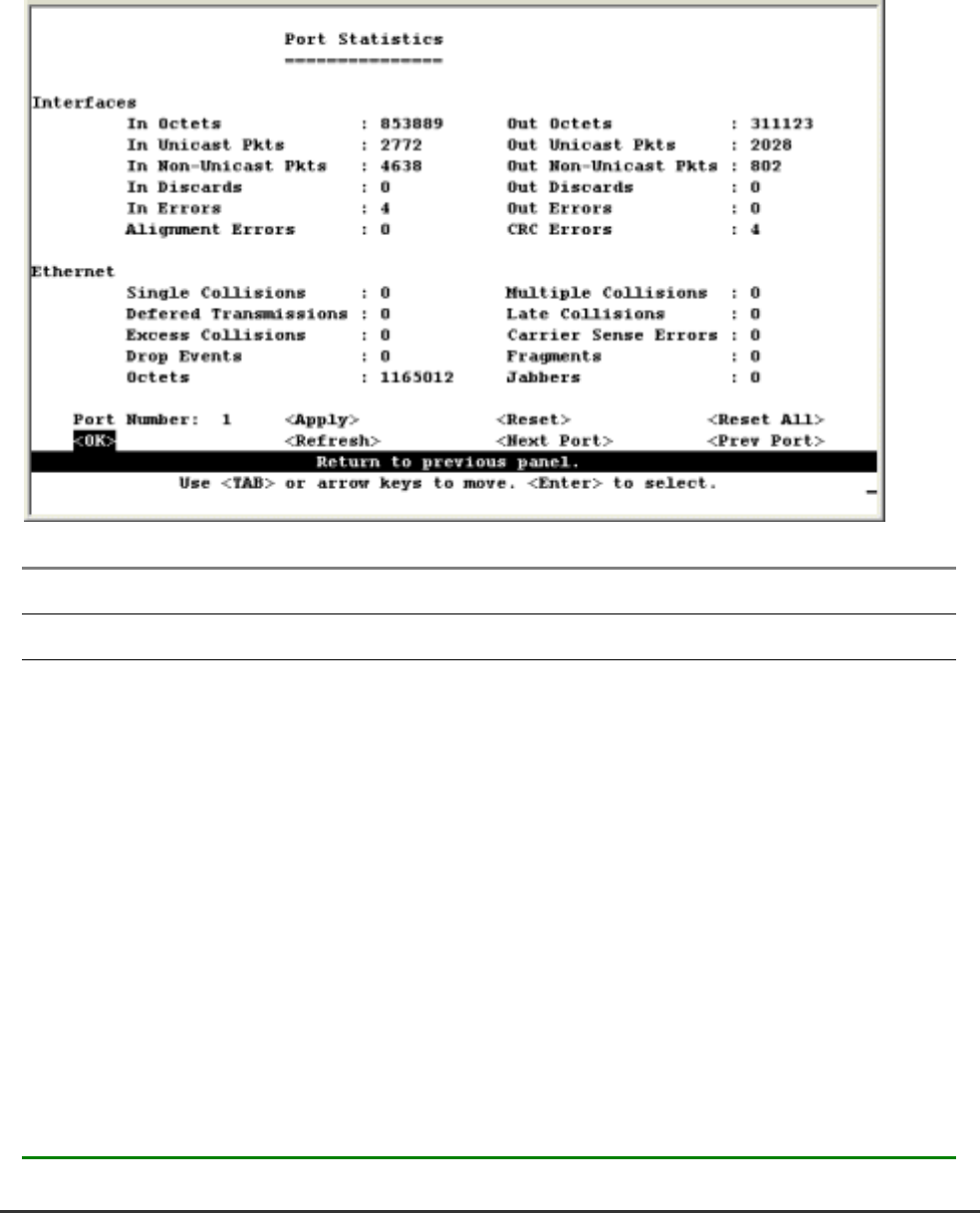Gigabit Ethernet Switch User's Manual
Table Of Contents
- Chapter 1. Introduction
- Chapter 2. Installing the Switch
- Chapter 3. Switch Management
- Chapter 4. Console Interface
- 4.1 Login Screen
- 4.2 Main Menu
- 4.3 System Information Menu
- 4.4 Management Setup Menu
- 4.5 Device Control Menu
- 4.5.1 Setting the System Operation Mode
- 4.5.2 Layer 2 Menu
- 4.5.3 Using the Bridge Menu
- 4.5.4 Configuring Virtual LANs
- 4.5.5 Configuring IGMP Snooping
- 4.5.6 Configuring IP Settings
- 4.5.7 Security Menu
- 4.5.8 Jumbo Packet Configuration
- 4.6 Monitoring the Switch
- 4.6.1 Displaying Port Statistics
- 4.6.2 Layer 2 Address Tables
- 4.6.3 Displaying Bridge Information
- 4.6.4 Displaying VLAN Information
- 4.6.5 IP Multicast Registration Table
- 4.6.6 IP Address Table
- 4.7 Resetting the System
- 4.8 Logging Off the System
- Chapter 5. Web Interface
- 5.1 Web-Based Configuration and Monitoring
- 5.2 Navigating the Web Browser Interface
- 5.3 Panel Display
- 5.4 Main Menu
- 5.5 System Information Menu
- 5.6 Management Setup Menu
- 5.7 Device Control Menu
- 5.7.1 Layer 2 Menu
- 5.7.2 Using the Bridge Menu
- 5.7.3 Configuring Virtual LANs
- 5.7.4 Configuring IGMP Snooping
- 5.7.5 Configuring IP Settings
- 5.7.6 Configuring Security Filters
- 5.7.7 Jumbo Packet Configuration
- 5.8 Monitoring the Switch
- 5.9 Resetting the System
- Chapter 6.Advanced Topics
- Appendix A Troubleshooting
- Appendix B Pin Assignments
- GLOSSARY

WGS3 Layer 3 Switch User’s Manual
- 95 -
4.6.1.1 Displaying Ethernet Port Statistics
Port Statistics display key statistics from the Interfaces Group and Ethernet MIBs for each port. Error
statistics on the traffic passing through each port are displayed. This information can be used to identify
potential problems with the switch (such as a faulty port or unusually heavy loading). The values
displayed have been accumulated since the last system reboot.
Select the required port. The statistics displayed are indicated in the following figure and table.
Parameter Description
Interfaces Group
In Octets The total number of octets received on the interface, including framing characters.
In Unicast Pkts The number of subnetwork-unicast packets delivered to a higher-layer protocol.
In Non-Unicast
Pkts
The number of non-unicast (that is, subnetwork- broadcast or subnetwork-multicast)
packets delivered to a higher-layer protocol.
In Discards The number of inbound packets which were chosen to be discarded even though no
errors had been detected to prevent their being deliverable to a higher-layer protocol.
One possible reason for discarding such a packet could be to free up buffer space.
In Errors The number of inbound packets that contained errors preventing them from being
deliverable to a higher-layer protocol.
Alignment Errors The number of alignment errors (mis-synchronized data packets).
Out Octets The total number of octets transmitted out of the interface, including framing
characters.
Out Unicast Pkts The total number of packets that higher-level protocols requested be transmitted to a










